Read on…if you dare…to learn fascinating facts about the world’s spookiest creatures!
WORLD’S LARGEST RAT
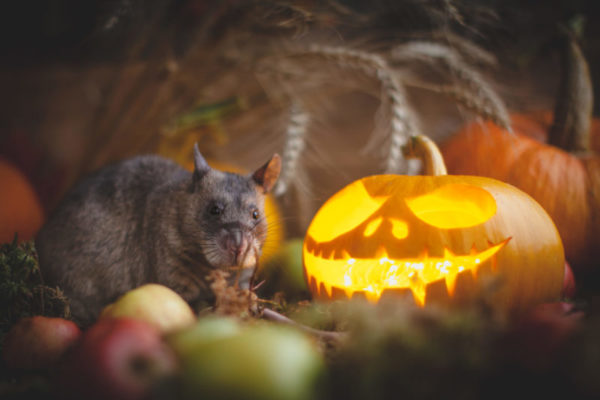
Can you imagine a rat that weighs more than 3 pounds and reaches 3 feet long?! It’s the GAMBIAN POUCHED RAT and yes, it’s the world’s largest rat!
But far from being fearsome, this unlikely hero plays an important role in human health. A nonprofit organization called APOPO trains these intelligent mammals to sniff out deadly land mines and also detect the highly infectious tuberculosis disease, which kills 1.8 million people a year.
The Gambian Pouched Rat lives in Gambia and other sub-Saharan African nations. It’s named for its large chipmunk-like cheek pouches that allow it to bring food back to the safety of its burrow.
The species is often kept as a pet and if you know me you know I own rats too (though not this giant!)
THE COBRA LILY
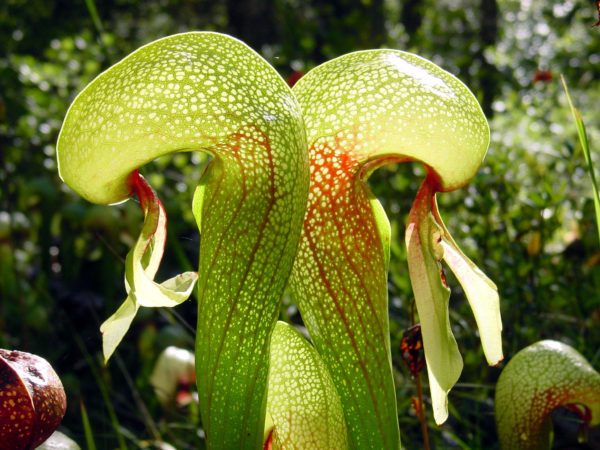
Introducing the aptly-named Cobra Lily; whose tubular insect-devouring pitchers terminate in a forked tongue-like structure that lures its unsuspecting prey to a watery grave!
I fell in love with the fascinating world of carnivorous plants in college, when I conducted my master’s thesis research on this species which is endemic to California and Oregon.
Carnivorous plants are species that attract, catch and digest animal prey. Some of the well-known varieties include the venus flytrap, sundew, pitcher plant, butterwort, and bladderwort – all of which can be found in the United States, as well as elsewhere in boggy wetlands throughout the world.
Charles Darwin was the first to prove that carnivorous plants actually are such. Why would a plant opt for such a specialized lifestyle? Because most carnivorous plant species reside on nutrient-poor soils. These environments also are largely competitor-free habitats, where carnivores thrive on nutrient-rich insects.
Many carnivorous plants are endangered due to loss of habitat, pollution, and increased black market poaching – including the Venus Fly Trap, native only to North and South Carolina.
THE RAVEN
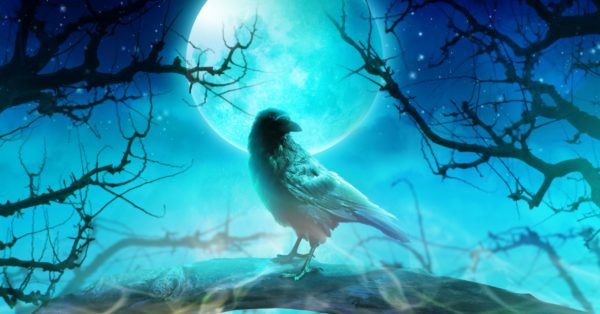
Ravens get a bad rap, having been associated with death, illness, and bad omens in many cultures around the world from the Greeks and Celts to the Native Americans.
Legend has it that if the nine ravens inhabiting the Tower of London ever depart, the kingdom will fall.
According to the Cornell Lab of Ornithology, Native Americans of the Northwest revere the raven as being the creator of the earth, moon, sun, and stars, but also regard it as a trickster and cheater. Poets and authors of Western cultures have often used the raven to symbolize death, danger, and wisdom. They were considered so creepy that Edgar Allan Poe memorialized them in his most famous poem, “The Raven”.
Even their flocks are known as an “unkindness”; a truly insulting and unfair characterization. Despite their reputation, ravens are highly intelligent. They belong to the Corvid family which includes 128 species such as magpies, jays, treepies, nutcrackers, choughs, jackdaws, as well as eleven species of ravens and their closest relatives, the crows.
Members of the family can be found worldwide and in every habitat. They do have the unsettling trait of remembering faces and holding grudges. They can mimic human and other animal voices, eat anything, including roadkill and garbage.
So next time you see a raven, fear it ‘nevermore’, but respect it for its intelligence and wit!
DEADLY SAILORS
The ominous name of the Portuguese Man o’ War fits the bill. It has numerous venomous, microscopic nematocysts which deliver a painful sting powerful enough to kill fish and has even been known to occasionally kill humans.
Apparently, its name comes from the superficial resemblance to a historic 15th-century sailing warship from Portugal known as a Caravel. It’s also known as the Blue Bottle as it also resembles a floating bottle. Another close relative in the Pacific Ocean is called the By-the-Wind Sailor because of its upright fin that looks like a sail of a boat.
The sail-like structure in these species allows the organism to catch the wind and travel on ocean currents, using its stinging tentacles to prey on young fish and other small animals while it travels. They are at the mercy of the winds and so are usually found washed up in their hundreds, or sometimes even thousands, after stormy winter weather.
Although the floating, gelatinous creature called the Portuguese Man o’ War resembles a jellyfish it is in fact a relative known as a siphonophore. Several types of jellyfish are as deadly or more so to the unwary ocean swimmer including the Australian Box Jellyfish, Sea Wasp, Irukandji Jelly, Lion’s Mane, Cannonball Jelly, and Moon Jelly.
Take it from me: you don’t want to be stung by these or any jellies in the ocean. I’ve had the misfortune to be stung in the Mediterranean, Atlantic, and Pacific Oceans and even the benign species leave painful, itchy welts on your skin that can last for days!
REAL-LIFE DRAGONS
The KOMODO DRAGON is best known as the world’s largest species of lizard, which can stand taller and heavier than a man with some specimens reaching nine feet long and over 300 pounds!
Of the world’s top ten largest lizards, seven are in the same family: the Monitor Lizards, as this real-life dragon.
But the spookiest fear factor is in their toxic saliva which contains numerous strains of deadly bacteria and venom.
The Komodo Dragon’s keen sense of smell can detect the scent of blood or rotting flesh from a long distance. As in other reptiles, it has a forked tongue that it constantly flicks out of its mouth to sample the air for potential prey.
The dragons can run up to 13 miles an hour but generally hunt by ambush in surprise attacks along trails or waterways.
Their menu includes Timor deer, wild boar, carrion, water buffalo, and even their own kind as they are ruthless cannibals.
And it’s not out of the question for them to attack and kill tourists. They are even known to raid the graves of local villagers!
They grasp their unlucky quarry with their razor-sharp set of inch-long serrated teeth that are frequently replaced so they never get dull.
If the prey escapes, it inevitably succumbs to death from the infections that riddle its body from the dragon’s bacteria and venom-laden saliva. The venom causes the inhibition of blood clotting, lowering of blood pressure, muscle paralysis, and hypothermia, leading to shock and loss of consciousness in their envenomated prey. So, the dragon simply waits patiently for the inevitable.
A hungry dragon can consume up to 80% of its body weight in a single meal using its extremely muscular jaw that allows it to quickly swallow huge chunks of flesh from its terrified prey!
Komodo Dragons may look fearsome, but they have more to fear from humans than we do from them. Millions of years ago their ancestors were widespread but rising sea levels trapped them on the islands of the Indonesian archipelago.
Of 17,000 islands in the chain, the dragons today are confined to just five of them within Komodo National Park; a UNESCO World Heritage Site, which was established to protect these rare creatures.
Despite official protection, Komodo Dragons face multiple threats. Illegal poaching, competition with feral dogs and people for prey, and habitat loss are just a few. Climate change, volcanic activity, earthquakes, and wildfires threaten their island habitats as well.
Today only about 3,000 Komodo Dragons remain in the wild, so they are also threatened by loss of genetic diversity from inbreeding. This unique species is officially listed as Endangered by the IUCN but conservation organizations are working to protect them from extinction.
TARANTULA HAWK
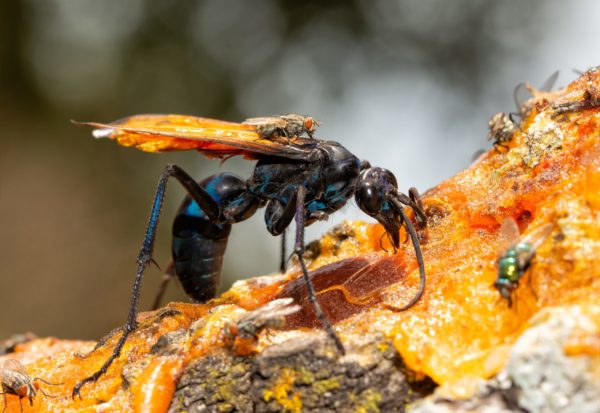
The Tarantula Hawk is neither spider nor bird, but a type of wasp whose sting is among the most painful of all insects in the animal kingdom. Though they’re known for being generally docile, if you do happen to get stung by one of the many species around the world, you’ll feel a “blinding, fierce and shockingly electric pain” second only to the bullet ant as rated by the Schmidt Sting Pain Index.
But the spookiest fact about Tarantula Hawks is why they sting their namesake, the tarantula spider. It’s not due to hunger, for they are strictly nectarivorous, dining on the flowers of milkweed and mesquite for those species that live in North America.
No, they sting the tarantula for an even more insidious reason. The female wasp stings the tarantula to paralyze it, then drags the helpless spider to her burrow where she lays a single egg on the spider’s belly.

And here’s the part that’s genuinely gruesome; the hatched larva buries into the still-living but paralyzed spider where it feeds voraciously on the spider’s flesh while carefully avoiding the vital organs so as to keep the spider alive! After several weeks of growth, the larva pupates into an adult tarantula hawk and flies off, leaving the poor spider to die a wretched death. BOO!
KILLER ZOMBIE FUNGUS
FRILLED LIZARD
Imagine coming face to face with this dragon-like creature, the Frilled Lizard!
Named for its frightful appearance, the Frilled Lizard can produce a startling display when it boldly raises the bright orange and red cape of skin encircling its neck.
This behavior functions as both a territorial defense as well as to frighten would-be predators and to impress potential mates during courtship.
These lizards, affectionately called ‘Frillies’ by admiring ‘Aussies’, is endemic to northern Australia, where it makes its home in tropical savannah woodlands.
Despite its spooky stance, this frilled ‘dragon’ only erects its fanciful frill when alarmed or threatened by predators. The neck frill is a thin but extensible fold of skin that when fully erected can measure nearly 12 inches across! This unique lizard inhabits the semi-arid grassy woodlands and dry sclerophyll forests of northern Australia and southern New Guinea. If faced with danger, it erects its fearsome frill by opening its brightly colored mouth while hissing, leaping, and sometimes chasing its aggressor.
At nearly 3 feet long, the Frilled Lizard seems threatening, but it prefers dining on cicadas, caterpillars, and beetles over human flesh!
NAKED MOLE RAT
GOLDEN SILK ORB-WEAVER SPIDER
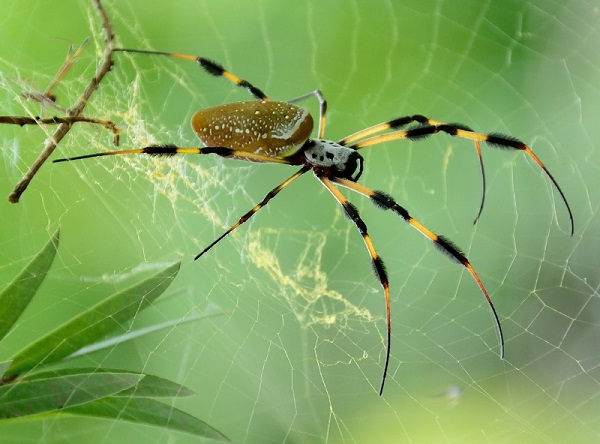
The golden silk orb-weaver is a rather striking arachnid with its large size, bright colors, and furry legs. It spins an enormous sticky, golden web where it waits right in the middle, facing downward, ready to seize its prey of flying insects, small beetles, and even dragonflies.
Their webs are so large and strong that I once saw a giant tropical hummingbird get captured in its grip while traveling in Honduras where I shot this photo!
DEEP SEA ANGLERFISH
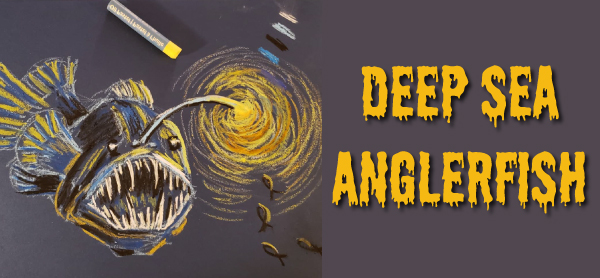
The female Anglerfish bears a luminescent organ at the tip of an arched filament that glows an alluring greenish-gold and is powered by symbiotic bacteria that dwell within.
The glowing organ serves to lure curious prey to the fish’s gaping maw in the otherwise inky blackness of its deep-sea habitat.
The male anglerfish lacks this glowing orb and is just a fraction of the size of the female and has a truly bizarre means of mating with her that borders on ghoulish.
When a male finds the rare female, he bites into her skin and releases an enzyme that digests the skin of his mouth and her body, fusing the pair down to the blood-vessel level. The male becomes dependent on the female host for survival by receiving nutrients via their shared circulatory system and providing sperm to the female in return.
When marine biologists first observed this permanent union between the sexes, they wrongly surmised that the male was some sort of parasite, looking similar to a tick on a dog, and only later did they discover that this means of reproduction likely evolved due to the rarity of the sexes finding one another.
In the vast darkness of the ocean’s depths, a male lucky enough to find a female decides to stick with her, literally for life.
Wise choice I’d say!
THE WORLD’S LARGEST FLOWER
Introducing Rafflesia; a rare tropical plant that bears the world’s largest flowers, up to 3 feet wide!
They’re also called ‘corpse flowers’ because they mimic rotting carcasses in their scent, color, and texture to attract carrion flies, their main pollinators.
They include about 36 species occurring in deep, dark rainforests such as on the island of Borneo, where I spied this specimen.
CASSOWARY BIRDS
The Cassowaries of Australia and New Guinea are certainly spooky-looking birds, and indeed are dangerous if provoked, being capable of inflicting fatal wounds with their strong legs and 5-inch long dagger-like middle claws. In fact, they’ve often been called “the world’s most dangerous bird”. And no wonder; they get to be six feet tall and 130 pounds!
So, indeed they are among the world’s largest birds as well and are related to other record-holders including emus, kiwis, ostriches, and rheas.
There are three species of Cassowary and this Southern Cassowary is also known as the Doubled-wattled Cassowary for its turkey-like flaps of skin hanging from its neck. All cassowaries sport an equally impressive and intimidating-looking helmet, or casque on top of their heads, whose function is debated among ornithologists.
Despite their reputation, Cassowaries are important keystone species as fruit-eating birds that help distribute seeds of native plants throughout the rainforests they inhabit.
SCORPIONS
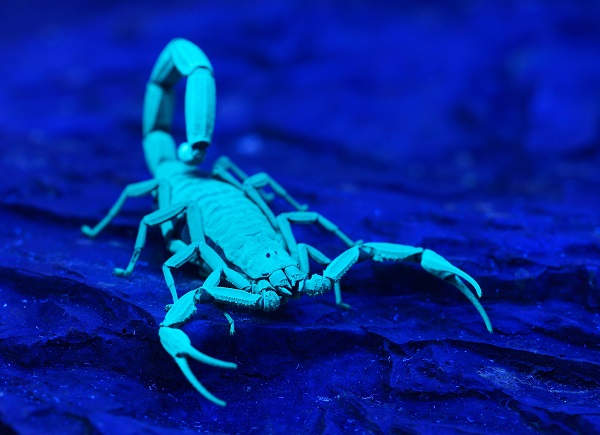
It’s easy to find scorpions in the dark with the aid of a UV flashlight because they glow when this type of light is shown upon them, like this one I spotted in Costa Rica’s Monteverde Cloud Forest.
All scorpions fluoresce under ultraviolet light, such as an electric black light or even natural moonlight. The blue-green glow comes from a substance found in the hyaline layer, a very thin but super tough coating in a part of the scorpion’s exoskeleton called the cuticle.
TIGER LEACH
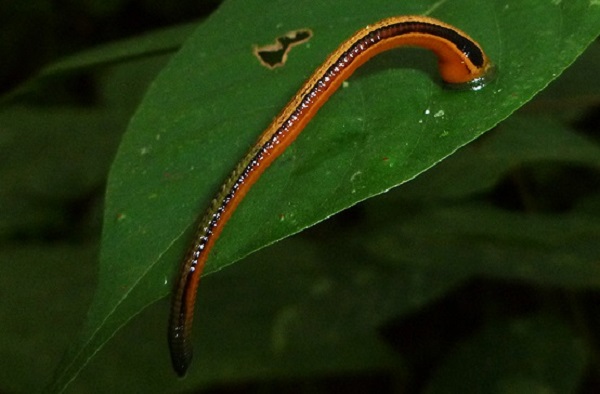
The Tiger Leech is named after the characteristic longitudinal stripes of its namesake mammal. I ran into this one in the lowland jungles of Borneo and I can tell you from first-hand experience that it has a painful bite and was not easily removed from my skin as it bore tenacious suckers on both ends of its inch-long body!
Amazingly, there are nearly 700 species of leeches, most of which reside in freshwater while some live on land or in the sea.
Like earthworms, who they are closely related to, they are hermaphrodites, having both male and female sex organs so finding a potential mate is twice as easy!
The world’s most famous species is the Medicinal Leech, which was used in antiquity for ‘bloodletting’ of patients back when ancient physicians believed one could have an imbalance of blood in the body.
Imagine!
CORPSE FLOWER
GILA MONSTER

The fearsome-looking Gila Monster is the world’s only venomous lizard!
According to Animal Planet’s Coyote Peterson, the Gila Monster’s bite is “like hot lava coursing through your veins” and is generally regarded as the most painful venom produced by any vertebrate! Its venom is produced in modified salivary glands of the lower jaw and is said to be about as toxic as that of a rattlesnake.
It inhabits the American southwest, including the Sonoran, Chihuahuan, Mojave, and Great Basin deserts, where it spends most of its time sheltering in underground burrows.
Although venomous, they are shy and very rare so it’s unlikely you’ll ever run into one in the wild. In fact, habitat destruction has led to them being listed as threatened and they’ve even been named by Utah as their State Reptile!
POISON DART FROG
The Golden Poison Arrow Frog is the most toxic land animal in the world – it has enough venom to kill 10 adult men! Its scientific name tells it all: Phyllobates terribilis, terrible indeed!
This species was used by the Choco people of Colombia to coat the tips of the blow darts they used for hunting. A single golden poison frog can supply enough poison for 30 to 50 darts, and the dart’s poison remains active for up to a year.
Researchers have found this frog’s toxins to be 200 times more potent than morphine and could potentially be used in medicine.
Although they look menacing, sporting bright yellow and black warning colors, they are actually only about as large as one’s thumbnail! I’ve been lucky to see dart frogs in the wild as was amazed by how tiny they were, despite their outsized reputation!
Interestingly, many of the 187+ species of dart frogs are popular pets because of their stunning coloration and the fact that their skin loses its toxicity in the absence of the wild prey that are the original source of this deadly toxin!
This frog, along with several other species of dart frogs, inhabits the rainforest along the Pacific coast of Colombia. Like many inhabitants of this area; known as the Choco Bioregion, it is endangered by habitat loss from climate change, agriculture, mining, and logging.
RHINOCEROS BEETLE

Though they may look frightening, beetles have more to fear from you than you of them. Over 300 species are eaten by humans, including this Rhinoceros Beetle, for their large, protein-rich larvae which are considered as culinary delicacies.
The beetle order of insects is the largest and most diverse of all, comprising over 400,000 species, whose members can be found in nearly all the world’s habitats.
They include such familiar insects as ladybugs, mealworms, weevils, flower chafers, scarabs, and aquatic whirligig beetles.
Even fireflies are beetles!
MARIBOU STORK

The MARABOU STORK is an imposing-looking African bird weighing up to 20 pounds with a wingspan spreading up to 12 feet!
Also known as the Undertaker Bird due to its shape from behind, it has cloak-like wings and back, skinny white legs, and sometimes a large mass of “hair” on its crown.
Besides its intimidating massive dagger-like bill and charred-looking bare head, it sports a large naked throat pouch with which it produces guttural croaking sounds as part of its courtship ritual.
It often accompanies equally spooky-looking vultures, from whom it steals scraps of dismembered carcasses. Like vultures, it is a scavenger with a naked head and long neck that keeps the blood from its carrion prey from accumulating on its body!
This widespread species of stork inhabits grasslands of central and east Africa.
CAIMAN AND PIRANHA
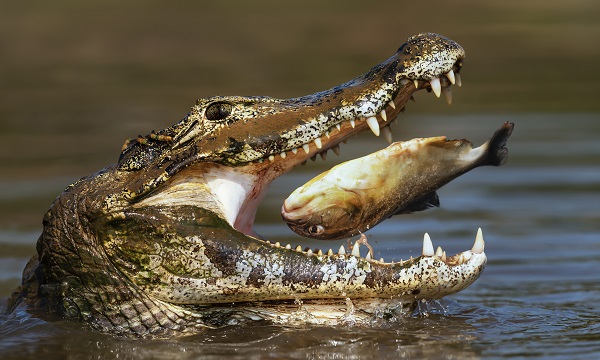
Here are two classically spooky creatures you wouldn’t want to be sharing a swimming hole with!
Caimans are a group of reptiles of Central and South American wetlands and rivers including the Amazon.
Like their close relative, the American Alligator, Caimans have more rounded snouts and their teeth are less visible than the more distantly related crocodiles.
Caimans eat aquatic animals and fish, like this equally ferocious-looking piranha, but won’t turn away a nice, fat Capybara if given the chance.
Like Caimans, piranhas have a more fearsome reputation than they probably deserve. Though stories abound of schooling piranhas quickly skeletonizing human prey, few fatalities have ever been reported.
Piranhas are omnivores, eating everything from fruits and aquatic invertebrates to other fish and smaller mammals.
Caimans, like piranhas, generally have more to fear from humans than we do of them, since both and hunted extensively by man and whose aquatic habitats are threatened by pollution, development and logging of their rainforest habitats.
Caimans are in the alligator family, thus closely related to the American Alligator and more distantly related to crocodiles and gharials.
Due to the large size and ferocious nature of the caimans, they have few natural predators within their environments. Humans are the main predators of the caimans as they have been hunted for their meat and skin.
FANGED PITCHER PLANT

The aptly named Fanged Pitcher-Plant bears canine-like appendages dripping with nectar that serve to attract its insect prey.
It is among the largest of all carnivorous plants, with pitchers over a foot long. It lives in the dark, dank peat swamps of Borneo where it feeds on ants, though some early explorers believed it fed on rats and monkeys because these would purportedly be found, drowned inside their pitchers!
TARDIGRADE

Hollywood movie directors would be hard-pressed to invent an animal as spooky looking as today’s featured creature to star in their horror film!
Tardigrades are microscopic critters, no larger than a pinhead, and are ubiquitous on our planet.Affectionately known as ‘water bears’ and ‘moss piglets’, there are over 1200 species with new ones being discovered annually!
They’re also known as ‘extremophiles’ because they live in the world’s harshest habitats from boiling fumaroles to deep-sea trenches but are also found in any moist environment from tropical rainforests to polar ice caps.
Thankfully, they aren’t considered household pests because they’d be harder to eradicate than cockroaches or rodents since they are nearly indestructible.
They can withstand temperatures ranging from absolute zero to boiling, can go years without eating, can survive the radiation of outer space, and can survive decades in a death-like state of cryptobiosis.
STONEFISH
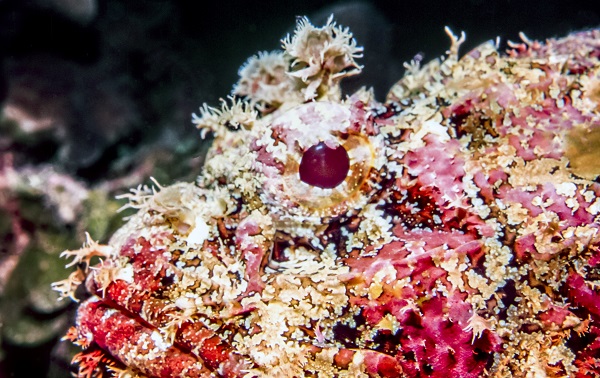
A harmless coral reef or…a deadly sea creature? You decide…at your peril!
The Reef Stonefish is widely considered to be the world’s most venomous fish. It inhabits shallow reefs in the western Pacific and Indian Oceans, where this animal’s perfect camouflage hides it from both predators and prey.
It dines on small fish and crustaceans by resting motionless among the similarly colored and textured reef, engulfing its meal in one gulp with lightning speed.
The Stonefish’s back is covered in sharp, stiff, spines that deliver their venom with instant results including severe pain, shock, paralysis, and even death for unlucky humans that touch or step on them.
So when you’re snorkeling in tropical waters take heed of my mantra; “don’t touch ANYTHING” because you never know if a harmless-looking plant or animal is actually a deadly foe!
Despite bearing the world’s most potent neurotoxin, the Stonefish is not offered complete protection for they are captured by humans for both their tasty flesh and for the aquarium trade.
Stonefish are related to the equally fearsome, camouflaged, and aptly-named toadfish, frogfish, scorpionfish, firefish, dragonfish, stingfish, and lionfish.
There are more venomous fish, over 1200 species than all other venomous vertebrates combined, including reptiles!
SLIME MOLD
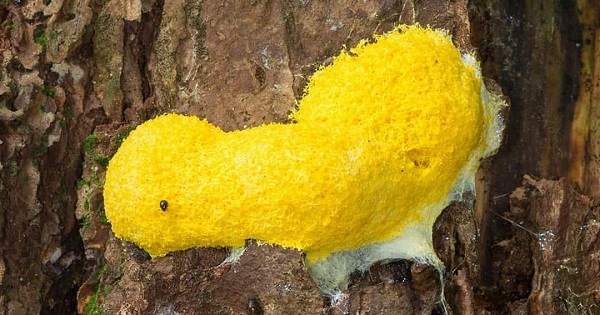
If you own a dog, you’ll understand how Dog Vomit Slime Mold got its name.
This yellow mold grows on a variety of decaying plant materials, breaking down nutrients and returning them to the soil.
HIPPOPOTAMUS
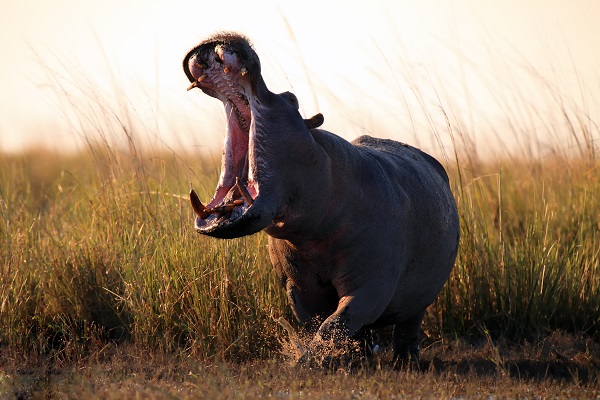
The HIPPOPOTAMUS has a well-deserved reputation as the world’s most dangerous land mammal, including in Africa where elephants, rhinos, lions, and leopards roam.
Hippos possess giant canines and incisors that self-sharpen as they feed. Their jaws support strong muscles that enable a bite force of over 8,100 newtons (take my word for it; that a lot!)
Their mouth has an impossibly wide gape that can open nearly 180 degrees. Surprisingly, this well-developed mouth wasn’t evolved to bite and kill for food but is used in combat with other hippos for territory and mating rights.
In fact, hippos are vegetarians, spending their nights grazing in meadows, returning at dawn to spend the hot days wallowing in refreshing waters of rivers, lakes, and swamps.Like elephants, they enjoy spending time in the buoyant water which helps support their massive size, which can be over 4,000 pounds for the larger species, while the Pygmy Hippo species weighs in at just a quarter of that.Their name comes from the ancient Greeks meaning ‘river horse’.
Oddly, the hippo’s closest relatives aren’t horses, pigs, elephants, or other similar-looking ungulates, but whales!
Now, that’s a spooky fact!
VENUS FLYTRAP
The insectivorous Venus Flytrap served as the main inspiration for the American horror comedy musical film, Little Shop of Horrors.
This rare plant is endangered and only occurs naturally in a small area of coastal wetlands in North and South Carolina.
It prefers to dine upon ants and spiders over the heartburn-inducing house flies that it is usually depicted as devouring.
Perhaps you kept a Venus Flytrap as a kid and probably killed it by teasing it too often since the trap door like leaves can only close about three times before dying.
These plants are actually quite easy to care for; I’ve had a pair that I named Seymour and Audrey for several years now.
Thankfully, the plants available at your local garden store have been raised by tissue culture methods and thus don’t threaten the native populations left in the wild.
VENOMOUS OCTOPUS
Blue-ringed Octopusus looks harmless enough, but their boldly patterned warning colors tell a different story. In fact, they are one of the world’s most venomous marine animals, containing enough tetrodotoxin to kill 26 humans within minutes. In fact, their venom is 1,000 times more powerful than cyanide! Tetrodotoxin is the same potent neurotoxin found in pufferfishes.
There are four species of Blue-ringed Octopuses found in the Pacific and Indian Oceans from Japan to Australia. They inhabit soft, sandy bottoms of tide pools and coral reefs, often hiding in crevices or empty seashells.
Thankfully, they aren’t aggressive, generally saving their venom to immobilize and kill their preferred prey of small crustaceans rather than hapless snorkelers.
VULTURES

Vultures may be considered gruesomely ugly by most, but they play vital roles in their habitats. They are truly the garbage men and recycling team of nature.
They help prevent diseases from being spread by the remains of dead animals by stripping the carcasses quickly and efficiently.
It’s a dirty job, but someone’s gotta do it!
Most of the world’s vultures are not as strikingly colored as the King Vulture of Central America.
According to Mayan legend, this species was a king of sorts, carrying messages between humans and the Gods.
Is this a face only a mother could love? You decide!
BULLET ANT
The BULLET ANT has the most feared bite in the insect kingdom.
In fact, this species ranks #1 on the Schmidt Sting Pain Index because those who’ve been unlucky enough to get bitten by one of these inch-long ants describe the pain as “waves and crescendos of burning pain, tsunamis of pain, throbbing pain, excruciating pain.”And yes…pain as intense as if you’d been shot by a bullet!
Bullet Ants inhabit the lowland rainforests of Central America and I’ve been fortunate to see them with my own eyes in the lowland rainforests of both Honduras and Costa Rica.
VAMPIRE BAT
The VAMPIRE BAT surely reminds one of Dracula, with its razor-sharp teeth, beady eyes, and pointy ears.
The bat deftly locates its victims with its ability to sense the warmth and breathing of its mammalian prey. Once bitten, the prey’s blood flows freely thanks to anticoagulants in the bat’s saliva. The warm blood is quickly lapped up by the bat’s tongue, aided by a cleft in its chin and grooves in its mouth.
Vampire Bats belong to the New World Leaf-nosed Bat family which is found from southern North America to South America and are in fact the most varied and diverse family of bats in the world!
STICK INSECTS
Stick Insects protect themselves from predators in a variety of fascinating ways depending on the species.
These include spraying offensive compounds that sting and burn the eyes and mouths of would-be predators, releasing blood from their joints, producing pungent odors, startling with flashes of bright colors, or by violently waving their appendages.
Others, like this one, also known as a walking stick or spiny leaf insect, exhibit extreme camouflage, blending in perfectly with their leafy forest habitat.
When that doesn’t work, they can always simply release their grip on a branch and drop out of sight of the offending observer (like me!)
SPIDER WEB

Spider web silk may appear delicate, but that is just part of the spider’s deception. Spider web silk is actually incredibly strong, especially that of the Darwin’s bark spider, whose silk is thought to be the strongest of any spider and is an impressive 10 times stronger than Kevlar!
Amazingly, spiders manufacture multiple types of silk that are used for a variety of purposes besides simply making their webs, including silk for entombing their prey and silk for making a cocoon to protect their developing eggs.
They even make several types of silk used in building their webs including both sticky and non-sticky types and silk used for the web’s scaffolding and for its spokes and outer rim.
So, I hope that next time you see a spider web, you won’t mindlessly wipe it away with your witch’s broom but stop to admire its delicate intricacy!
SHOEBILL

The Shoebill doesn’t mean to alarm you with such a devilish grin!
Nevertheless, it certainly cuts an imposing silhouette with its 8-foot wingspan and standing over four feet tall!
Named after its huge, clog-like schnozz, the Shoebill deftly hunts fish, frogs, snakes, and even young water monitors and crocodiles while wading among papyrus, reeds, and cattails in its swampy home in wetlands of tropical east Africa.
Despite being classically ‘ugly’, the Shoebill is highly sought-after by birdwatchers, not only for its unique appearance but also its rarity. Populations of this unique species are declining, down to perhaps only 5,000 individuals, due to habitat destruction and collection by the avicultural trade.
GHOST MUSHROOMS
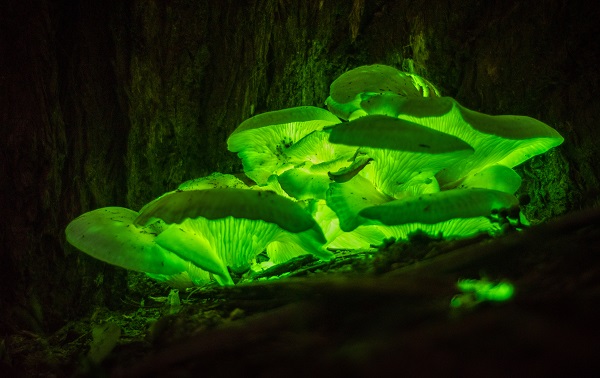
LEARN MORE ABOUT SPOOKY NATURE!
If you’ve enjoyed reading about spooky flora and fauna around the world, check out Christine’s online workshop!

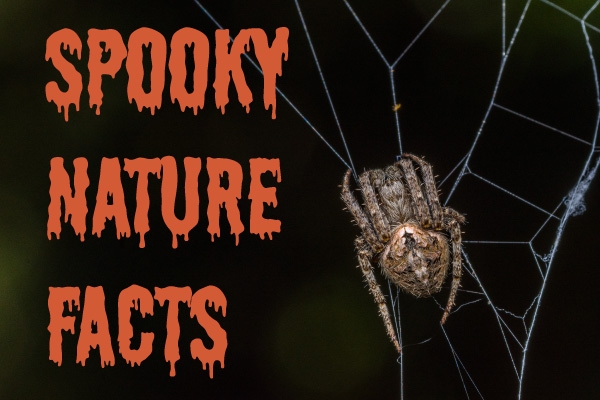
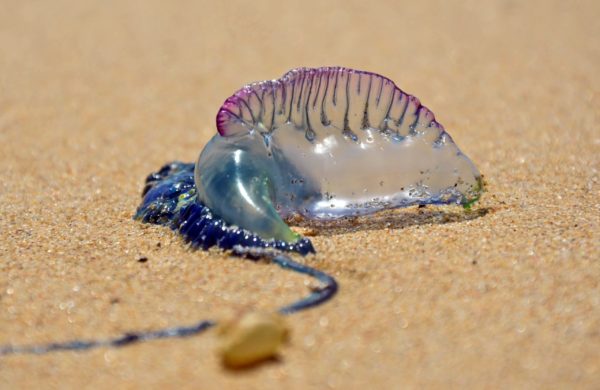


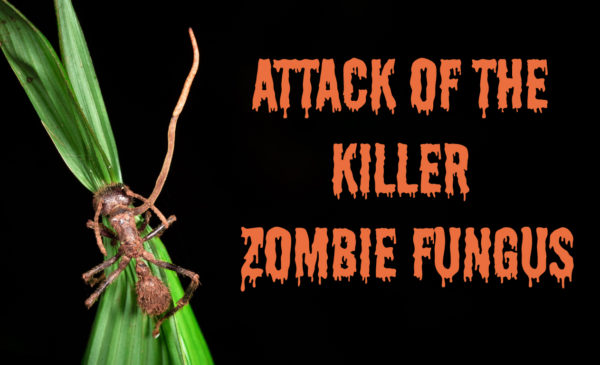


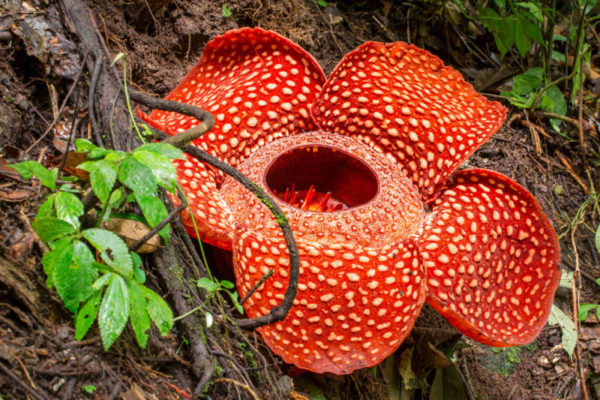
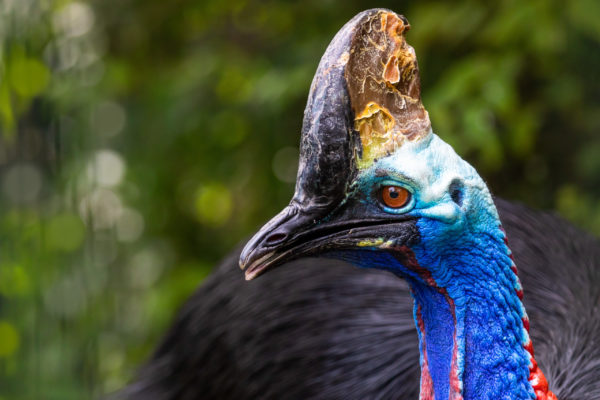

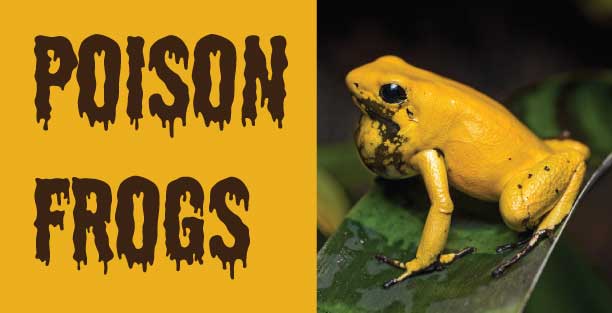
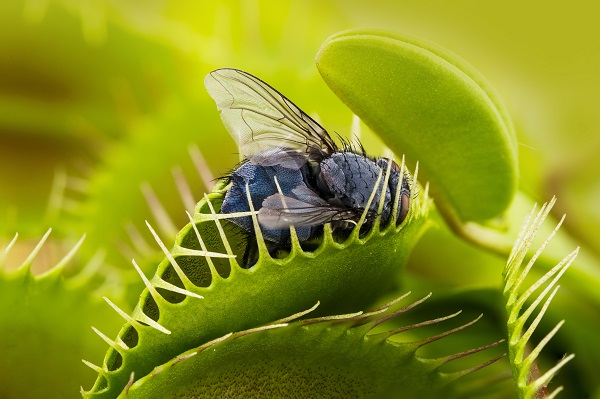

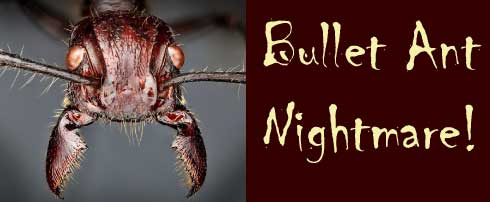

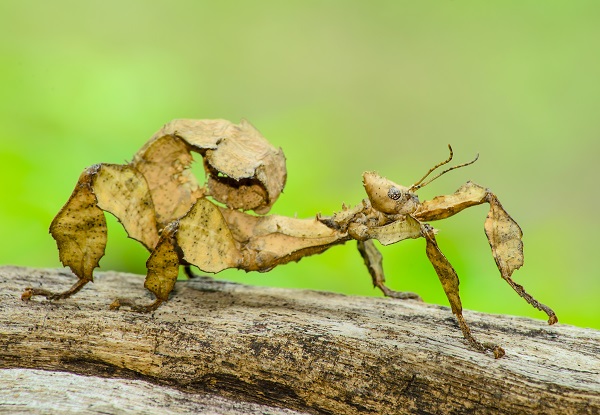

Thank you for these great spooky stories and beautiful pictures all in line here now. I saw them passing in the online workshops but often I missed the names to write down. …. lots of things to watch again.